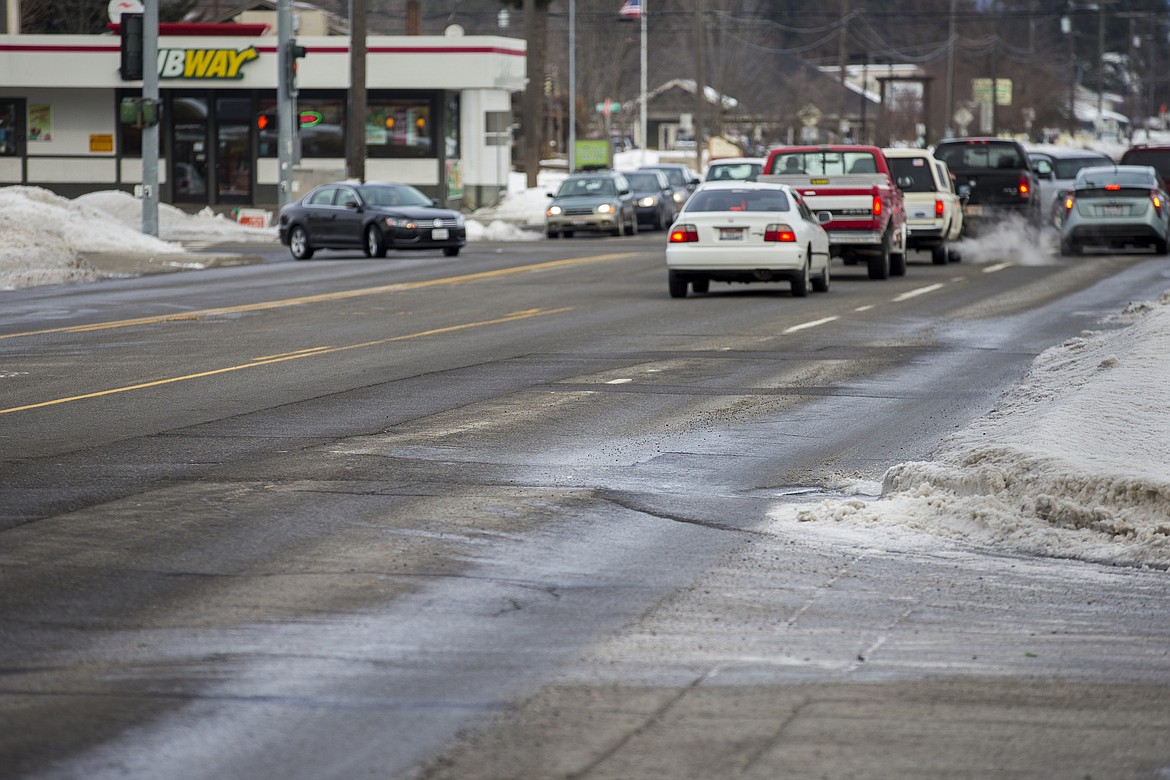Work in streets now cuts both ways in Post Falls
By BRIAN WALKER
Staff Writer
POST FALLS — Bob Flowers couldn't believe his eyes when gas lines were replaced in Post Falls two years ago.
"The spot patching made the streets look really bad," the Post Falls resident said. "It looked like a giant patch quilt. If a contractor comes in and does damage, it should be returned in the same condition as it found them."
The city of Post Falls recently took action on such a concern when it approved a pavement cut policy that outlines rules utilities, developers and other companies should follow when they need to cut into city streets for installation or replacement projects.
"It's wonderful to know that there's now some teeth to it," said Flowers, who lives on the east side of the city where Avista Utilities replaced its gas lines.
Russ Connole, Post Falls public services director, said the policy sets timelines, methodology and construction practices for cuts to help preserve the long-term integrity of roads and reduce future maintenance dollars spent on those.
"Many cities have pavement cut policies, and we believed this is a good time to move forward with one," Connole said. "Oftentimes a patch can become a weak point in the street."
Connole said Post Falls' growth spurred the need for the policy. The city issued 338 permits for single-family homes last year and it has 169 miles of roadway.
"Maintaining the integrity of the streets saves the taxpayers in the long run," he said.
The policy states cuts will not be allowed for five years after new road construction or reconstruction; three years after asphalt overlays of existing roads; and two years after chip sealing or seal coats.
Exceptions will be allowed for emergency cuts to protect public health and safety and public works projects initiated by the city.
Temporary patches will need to be completed within 24 hours of all road cuts. Permanent patches must be completed within seven calendar days of the initial cut.
Asphalt patches must be extended a minimum of 2 feet beyond the excavated trench limits.
The policy also outlines subgrade work, the size and direction of the cuts and other construction practices.
Connole said if the patchwork isn't done properly, moisture can set in and damage the streets.
Mayor Ron Jacobson said the policy allows both the city and companies doing the work to be on the same page.
"The utilities like to know what the policy is," he said. "It also helps facilitate conversation between the city and the companies so there can be a more coordinated effort."
Debbie Simock, Avista Utilities spokeswoman, said several cities in Avista's service area have pavement cut policies.
"We appreciate our good working relationship with the city of Post Falls and anticipate no issues complying with their new policy," she said.
Connole said he views Avista's gas line project as simply an example of street cuts because it was a major project that had roads tied up with construction. He said he didn't have a problem with the company's patchwork.
"They patched the roads in a method that's consistent with our policy," he said. "They did a good job of patching the holes they put in."
Flowers said he's pleased the city now has a street cut policy to protect taxpayer investments.
"It can cost quite a bit of money to re-seal coat streets," he said.

